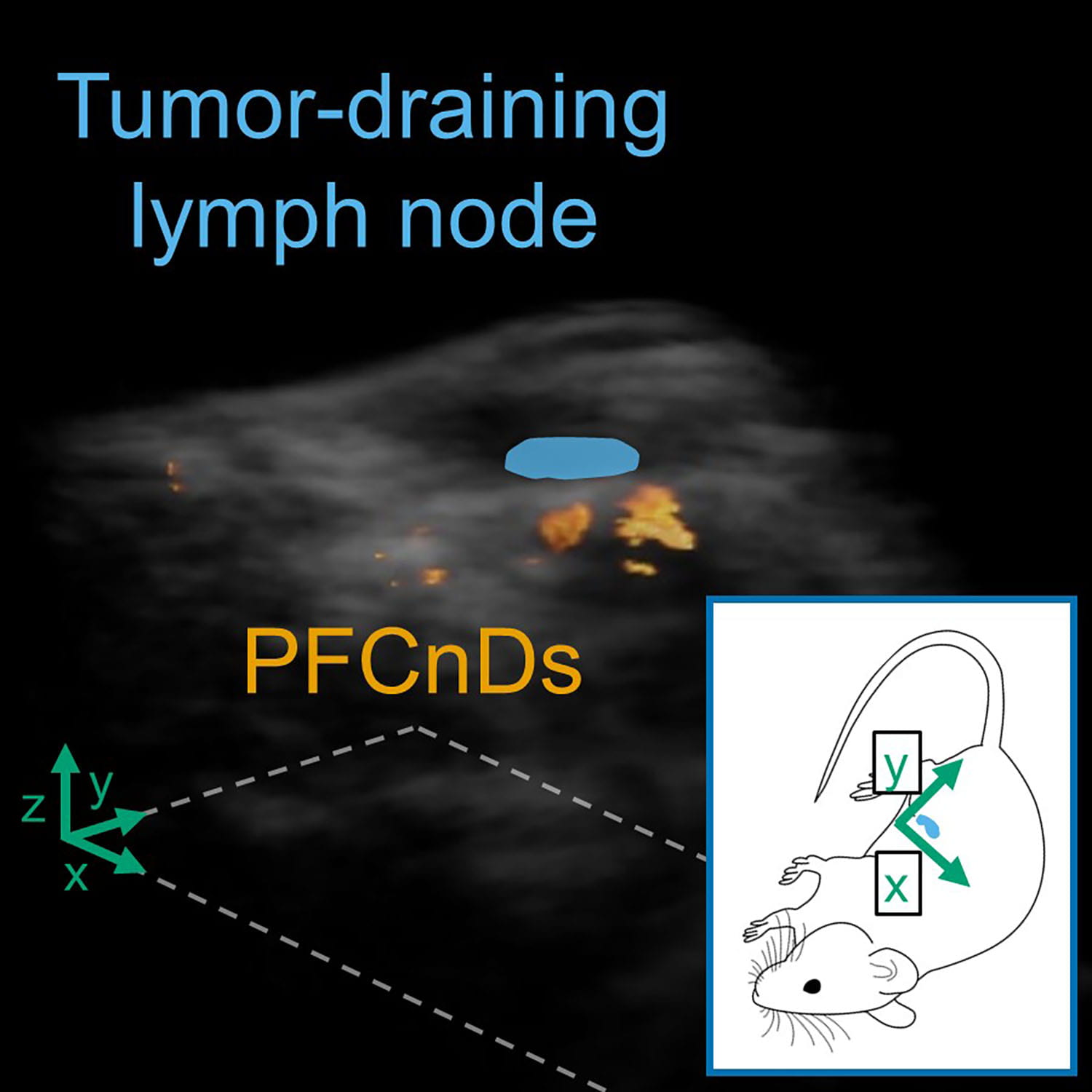Summary
 Perfluorocarbon nanodroplets (PFCnDs) are an emerging class of ultrasound and photoacoustic (USPA) contrast agents. They leverage a user-initiated phase transition of the perfluorocarbon core from liquid to gas in order to obtain the imaging-contrast advantages of a large particle while retaining the superior diffusion characteristics of the precursor small particle. The small initial size of PFCnDs allows them to be used in biological systems such as the lymphatics where traditional, larger ultrasound contrast agents cannot be effectively utilized in a clinically-scalable way.
Perfluorocarbon nanodroplets (PFCnDs) are an emerging class of ultrasound and photoacoustic (USPA) contrast agents. They leverage a user-initiated phase transition of the perfluorocarbon core from liquid to gas in order to obtain the imaging-contrast advantages of a large particle while retaining the superior diffusion characteristics of the precursor small particle. The small initial size of PFCnDs allows them to be used in biological systems such as the lymphatics where traditional, larger ultrasound contrast agents cannot be effectively utilized in a clinically-scalable way.
Our lab predominantly utilizes PFCnDs with a perfluorohexane core, which allows these agents to vaporize and recondense multiple (1000+) times. This phenomenon enables longitudinal imaging of a single injected dose of PFCnDs. Ongoing embargoed work is exploring the ability of PFCnDs to traffic in the tumor-draining lymphatics of spontaneous, immunocompetent small-animal models of breast cancer. By utilizing PFCnDs in a method similar to the clinical standard of sentinel lymph node biopsy, this enables a translatable avenue for adding value to the existing paradigm for assessing breast cancer metastases. For example, PFCnDs can be functionalized with diagnostic markers to serve as an “in vivo biopsy,” or these agents can be loaded with therapeutic cargo as a “theranostic” vehicle.
Further Reading
- Yarmoska, S. K., Yoon, H., & Emelianov, S. Y. (2019). Lipid Shell Composition Plays a Critical Role in the Stable Size Reduction of Perfluorocarbon Nanodroplets. Ultrasound in medicine & biology, 45(6), 1489-1499.
- Santiesteban, D. Y., Hallam, K. A., Yarmoska, S. K., & Emelianov, S. Y. (2019). Color-coded perfluorocarbon nanodroplets for multiplexed ultrasound and photoacoustic imaging. Nano Research, 12(4), 741-747.
- Yoon, H., Yarmoska, S. K., Hannah, A. S., Yoon, C., Hallam, K. A., & Emelianov, S. Y. (2017). Contrast‐enhanced ultrasound imaging in vivo with laser‐activated nanodroplets. Medical physics, 44(7), 3444-3449.
